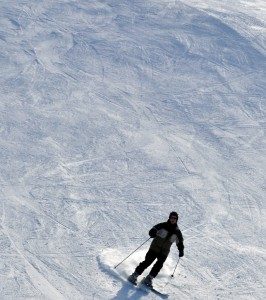We treat a lot of ski injuries at The Valley Clinic! Although upper limb and hand injuries are not uncommon, by far the most commonly injured area is the knee. These injuries range from simple “patella (knee cap) overload” to a complete rupture of one or more of the ligaments which stabilise the knee.
Weirdly, most of these injuries occur when the skier is stationary or moving slowly and then falls backwards. Slow falls may not stimulate the binding to release causing a twist on a fixed foot. There is a theory that modern “carving” skis contribute to this effect. While the design of the ski boot means the foot and ankle are rarely injured, the knee takes more of the strain.
Here are some top tips to avoid injuries on the slopes:
- WEAR A HELMET! How many tragic stories do you need to hear to convince you that “helmets make my head hot and mess up my hair” is a ridiculous reason for not wearing one? “I’m a really good skier” is also nonsense. The good skiers can be taken out by the bad ones. Would you refuse to wear a seat belt because you are a good driver? OK, I’ve made my point.
- Take lessons if you are inexperienced.
- Have a rest day mid-week. 3pm on the 3rd day is the most common time for injuries to occur.
- Keep within your comfort zone. You won’t impress anyone when you’re on crutches.
- Don’t drink alcohol at lunch time.
- Don’t wear a knee brace unless you have had re-constructive surgery and have been advised by your surgeon or physiotherapist to do so or if you have advanced osteoarthritis. Braces can inhibit the muscles from responding to the demands of the activity.
If sadly, you do sustain an injury, seek advice and expert help early. As a matter of fact, see us!
Image courtesy of “franky242”



Comments are closed.